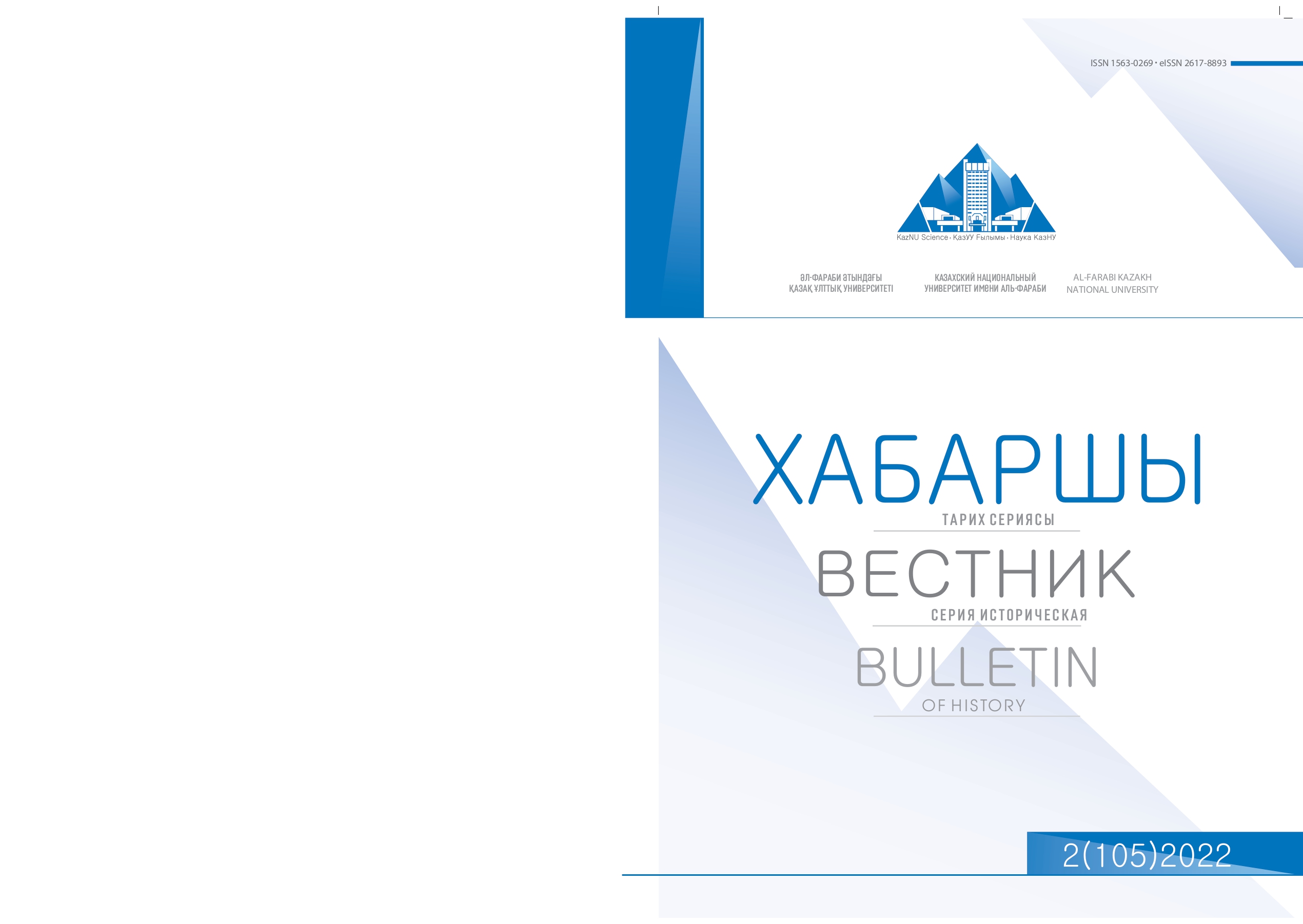Ethnographic interpretation of symbols and attributes in some archaeological sites
DOI:
https://doi.org/10.26577/JH.2022.v105.i2.022Abstract
With the development of ethnological science, it is important to «interpret» and conduct cultural analyses in research methods. The application of an interdisciplinary scientific approach has provided new perspectives and breakthroughs. It is important to establish the totemic, cult meaning of «bricks–talismans», that is, burnt bricks with the foot imprint of a wolf (bori) found in the medieval city of Saraishyk, which flourished in the era of the Golden Horde, and from the brick walls of the Mausoleum of Alasha khan. Also, a wall brick with the stamp of a wolf paws was found at the site of the medieval settlement of Koktam. Bricks and wall ornaments of the mausoleums of Alasha khan, Bolgan Ana and in the Golden Horde city of Kyshkala, were recently found together with patterns on vessels widely used in handicrafts. The terracotta brick mausoleum of Bolgan and Kyshkala madrasah are also decorated with a tulip pattern. Ornaments in the wall brick mausoleum of Alasha khan kknow as kustandai, alabas, kuskanat, ashamai are often found on Kazakh carpets. The depiction of predators such as lions and leopards on coins found in Saraichik is a sign that they were an attribute of power. Determining the significance of minting images of the moon, stars, sun on Saraishyk coins, imply a careful study of the origins and roots of folk knowledge. The meaning of signs on the medieval monuments is associated with Islamic culture and pre–Islamic relics. Key words: Golden Horde, architectural monuments, Kyshkala patterns, monuments of Saraishyk, ethnoarcheology.




